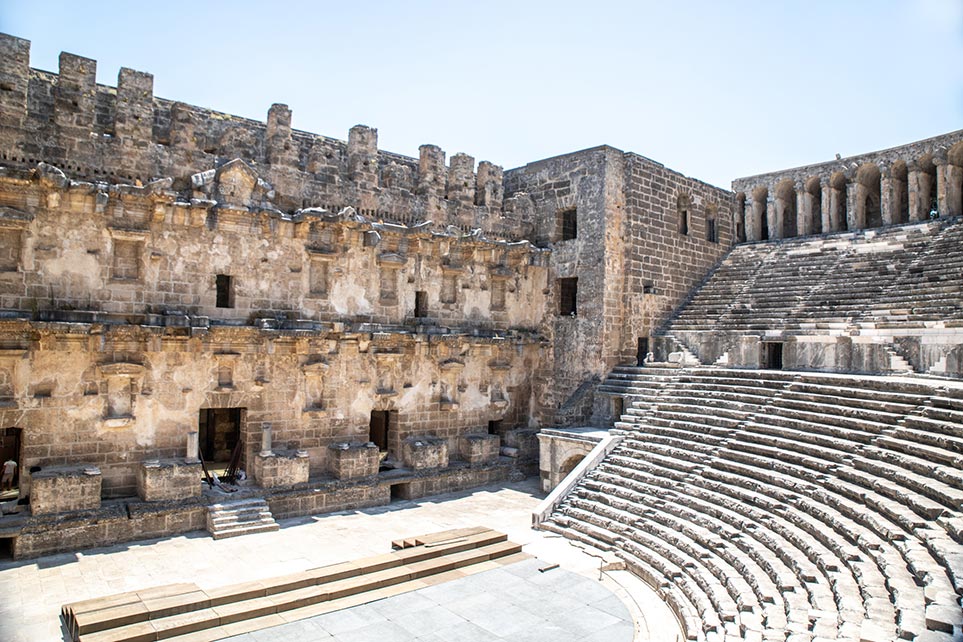
Turkey is an excellent place to visit if you love the history of the Greek and Roman Empires. Throughout Turkey there are numerous museums displaying artifacts of these historic empires, You’ll discover descriptions depicting the trials and tribulations of the people as they discovered the lush, unspoiled lands of Turkey. When my husband and I became expats in Antalya, Turkey, we were excited to learn that within the Antalya province there are over 27 major museums and archeological monuments to visit.
MUSEUM CARD
Friends of ours recommended that we purchase a Museum Card (MuzeKart) for 60TL ($9 per person) because it would be a more economical route than individual entry fees if we planned to visit many museums and historical sites throughout Turkey. The cost to enter a museum or historical without the card is 30TL, but with the museum card you gain entry into most museums for free and get to skip the line and head straight to the entry gate. After using the card at two museums the card had already paid for itself. The card can be purchased at any museum, just let the attendant know that you wish to purchase one. An identification is required at the time of purchase. If you plan on visiting several museums and historical sites this will prove to be the best purchase ever!
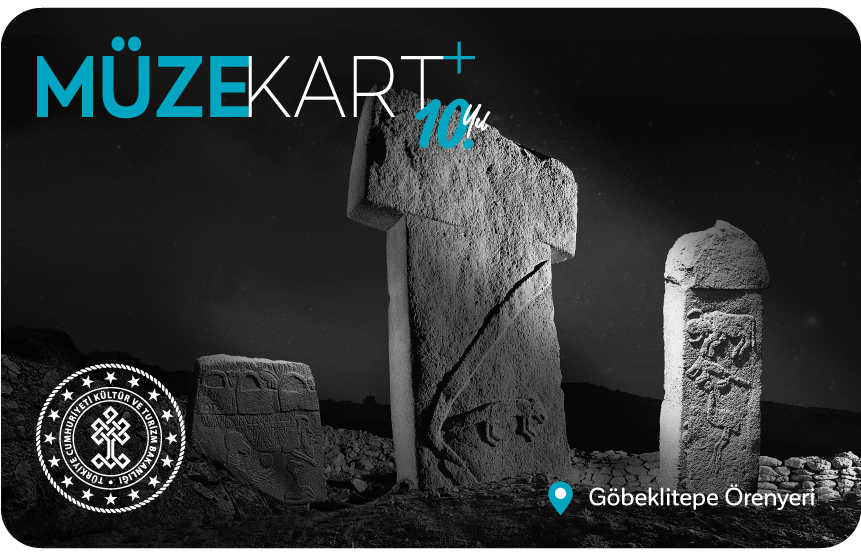
Two historical sites near Antalya to visit are Perge and Aspendos. Both hace ancient ties to Pamphylia and Roman Empire. Before you travel to the ancient cities of Aspendos and Perge, I suggest you do a little research on each to get familiar with the cities layouts and historical happenings during that period of history. Maps can be purchased at the museum gift shop.
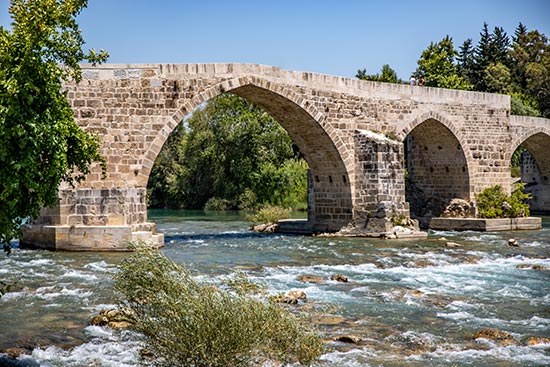
“Aspendos Bridge”
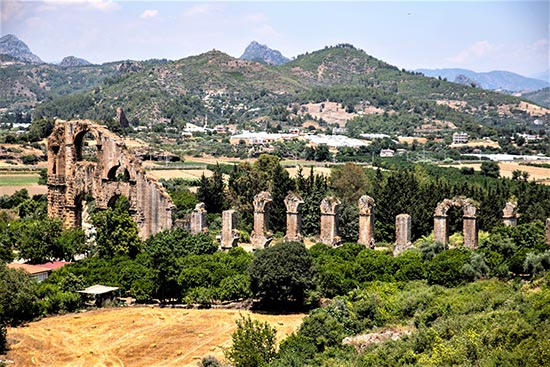
“Apendos Aqueducts”
When you first arrive, it’s impossible to miss the massive Aspendos Theater. This Roman designed theater was built between 161 and 180 AD by the famous Emperor Marcus Aurelius and still remains largely intact. There are 39 rows of seats which can hold up to 20,000 spectators. At the top of the structure is an arched walking gallery and to this day plays and performances are still held in this magnificent theater.
Aspendos was settled in the early fourth century BC and quickly rose in importance as a trading post due to easy access to the river and the minting of coins. This city was occupied by Alexander the Great in 333 BC who later became an ally of the Roman Empire.
Located behind the Aspendos Theater is a large area on the hillside, referred to as “The Great Hill, where you can wonder about and admire the many ancient ruins. During the wealthy years of the roman empire, an acropolis, basilica, and council chambers were built here. From upon the Great Hill, you can see stretching out across the city an aqueduct, which is also still largely intact. As you stand atop the Great Hill it looks like miles of arches stretching across the mountain.
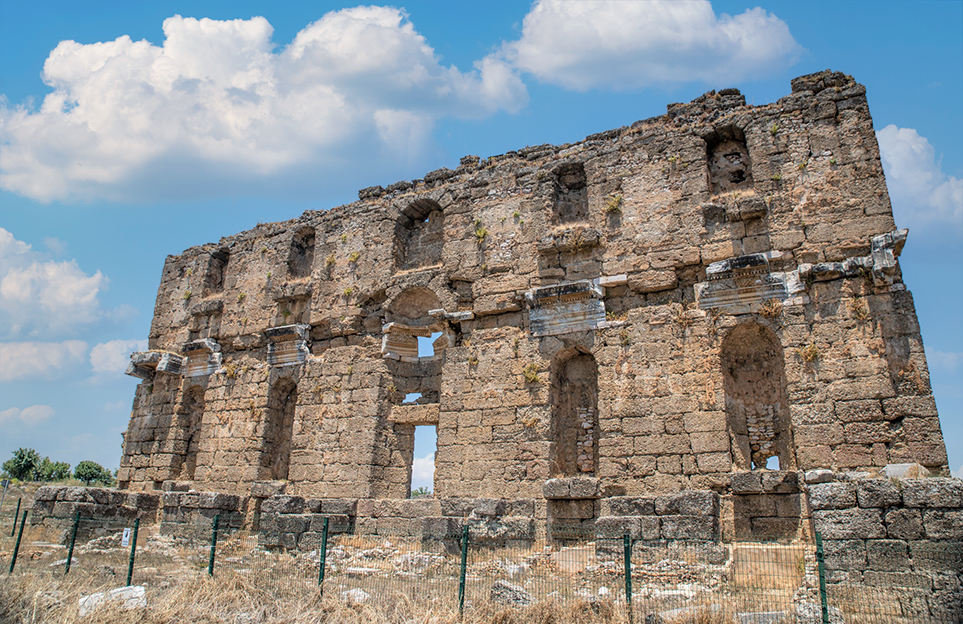
Nymphaeum
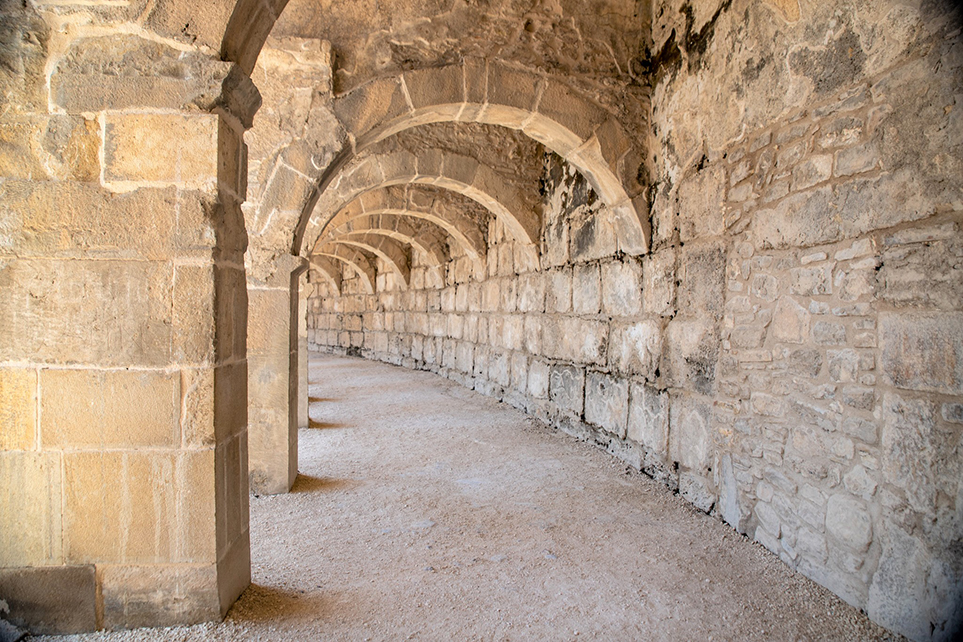
Aspendos Theater Gallery
Like many people, I had no idea what an aqueduct was or what its purpose served during the reign of the Roman Empire. Aqueducts are a series of arches engineered to bring water into the city from the mountains. What makes these aqueducts so unique is that they are some of the few surviving examples still standing today. The water was brought in through a channel constructed of carved stone blocks on a belt, 50 ft. above the ground. The water is collected in towers at the end of each arch on both sides, filtered using pebbles and coals, before being distributed to all parts of the city. The Romans were well ahead of their time when they created a city-wide water system!
As we departed the Aspendos ruins, we stopped at the Aspendos Bridge, (also known as the Eurymedon Bridge) where the battle of the Eurymedon was fought. This bridge is located on the Köprüçay River and the sound of the roaring water moving below accompanied by a nice breeze made the walk across the bridge very enjoyable.
Getting To: From Antalya, it is 44 km, about a 45-minute drive by car.
Tours: If you want a more in-depth history and understanding of the people of Aspendos I suggest taking a group or self-guided tour upon arrival (purchase at the gift shop).
Recommendation: Bring your own bottled water. If you happen to forget anything, drinks and snacks are sold at the entrance.
What to Wear: If you plan to explore the hillside you will need to wear good hiking sneakers. I also recommend wearing a hat and sunglasses. Do not forget your sunscreen!
Cost: 50TL per person.
Operation Schedule: 10:00 am – 7:00 pm, Closed on Mondays
Perge
Perge was an ancient 13th-century Greek city in Anatolia and the capital of Pamphylia. Its most notable citizen was Apollonius, a mathematician, and astronomer who gave the ellipse, parabola, and the hyperbola the names we know them by today. In 188 BC Perge fell under Roman rule and in the 1st century AD, Christianity reached Perge through Paul the Apostle, who most likely erected the first Christian Church in the area.
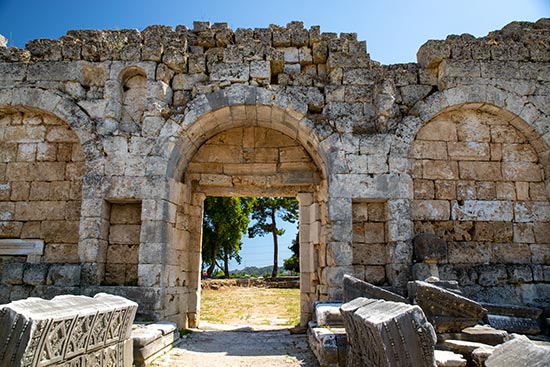
“Perge Roman Gate Enterance”
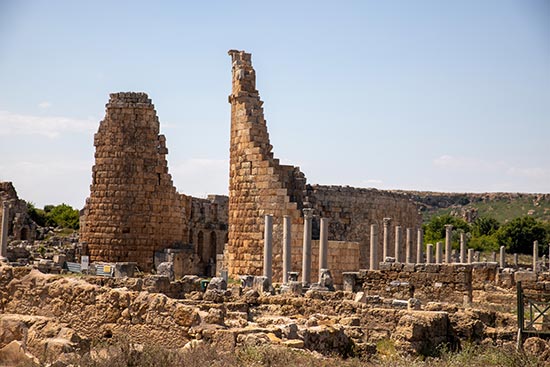
“Perge Hellenistic Gate”
The ancient theater of Perge stands along the roadside and combines both Greek and Roman architecture. It was built in 120 AD and has mythological scenes depicting the life of Dionysus, throughout the interior of the theatre.
Across the street is Perge’s ancient stadium, Aphrodisias. Built-in the 2nd century AD, it’s 256 yards long and 37 yards wide, making it one of the largest of its kind. There are 30 barrel-vaults supporting the seating area and these vaults once served as shops.
As you enter Perge, you will walk through two ancient Roman Hellenistic gates. Through the gates, you’ll walk into the courtyard that was designed in the 4th century AD. The gates that guard the courtyard are one of the most iconic features of the entire city. On the north end of the courtyard is a three-gated structure resembling the Hadrian Gate in Antalya.
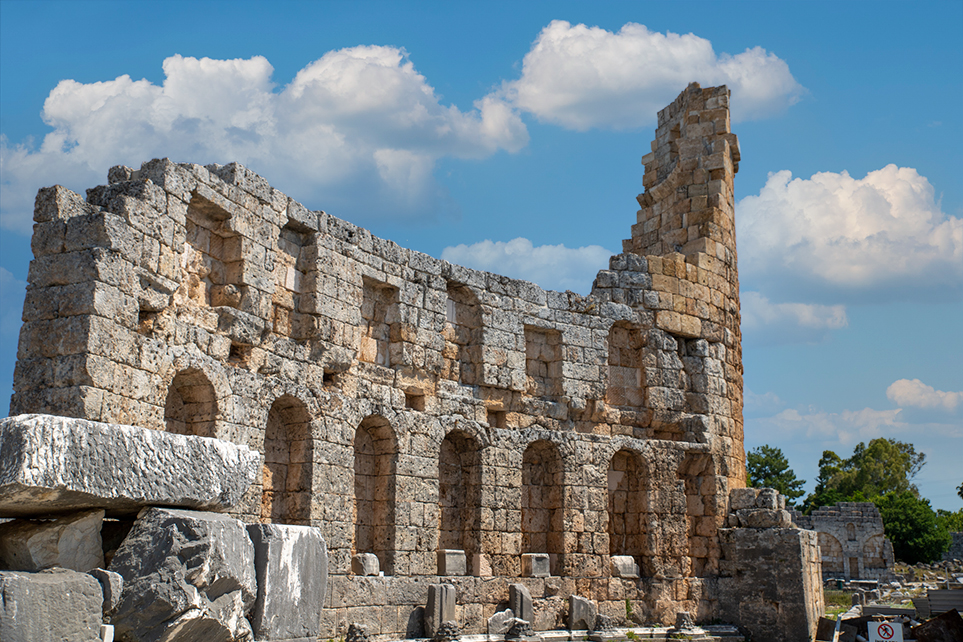
Hadrian Gate
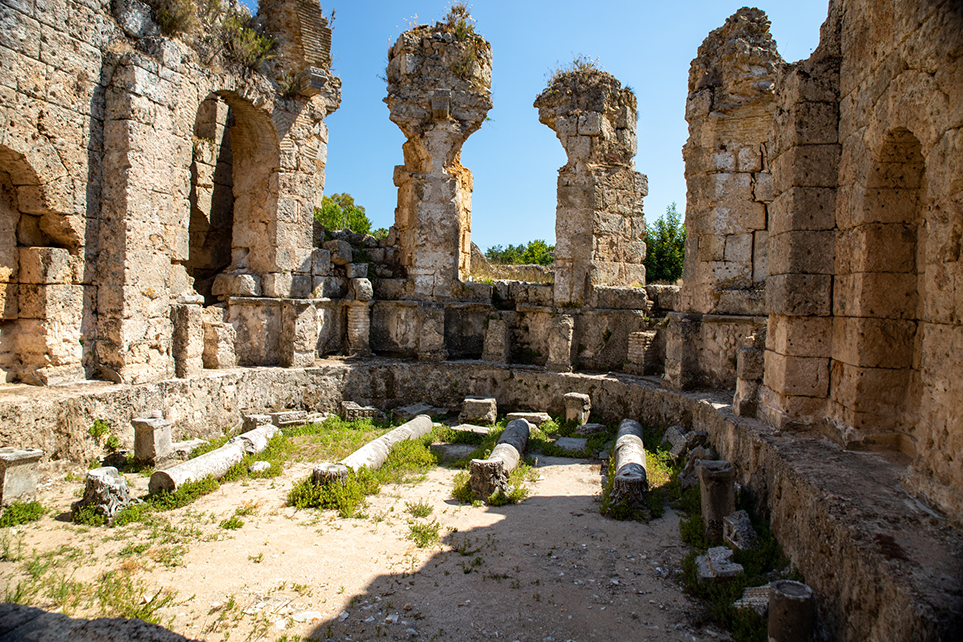
Roman Baths
One of the most preserved Roman baths can be seen in Perge. These baths consisted of marble rooms with large windows. Marble fragments of the bathing pools can be viewed as you walk through. When the bath was active, it consisted of caldarium (hot water chambers) and frigidarium (cold water chambers).
There are several Christian shrines in Perge. You can walk through the ruins of a three-nave basilica dating back to the 5th or 6th century AD.
Near the Hellenistic gate is the location of Perge’s agora (shopping area). The agora was surrounded by colonnades where the shops once offered various goods and services to pedestrians in the city.
Under the Roman Empire, this city flourished with wealth for both public and private buildings. When Christianity became the official religion of the Roman Empire, the Council of Nicaea and the Council of Ephesus took leadership here. It was not until the 8th-century Arab attacks which began to weaken the city that most of its inhabitants moved away. Seljuk Turks occupied this area in 1078 and the Ottomans took control in 1392. Throughout its lifetime, this city had many visitors from around the world.
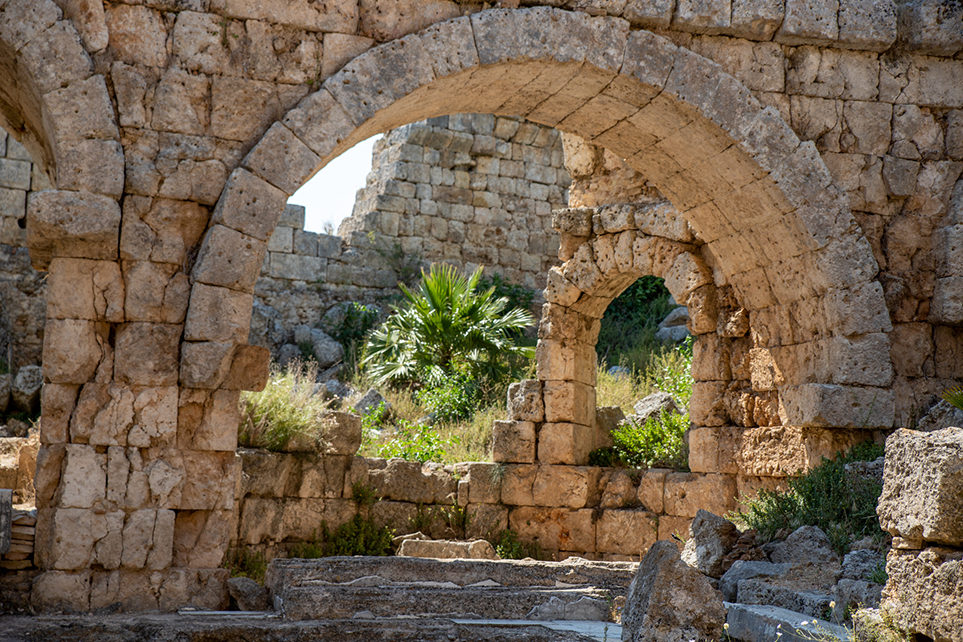
Perge Roman Baths
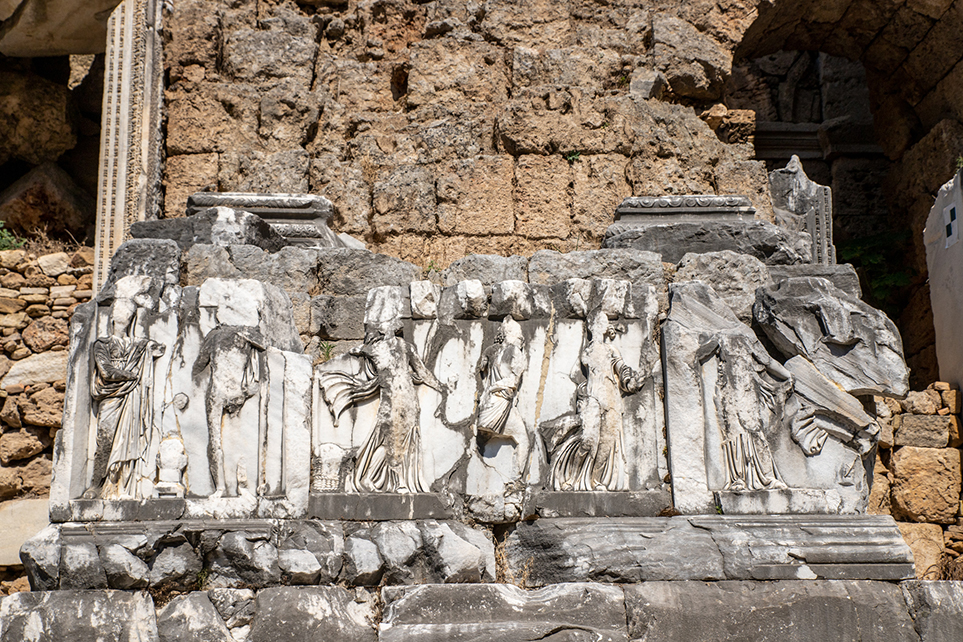
Dionysus Life Scene in Theater
It truly was amazing to see so many archeological ruins dispersed around Perge. Today, archaeologists continue to discover additional hidden parts of this city that tell stories of those that once lived here.
Getting To: From Antalya, it is 17 km, about a 25-minute drive by car.
Tours: If you want a more in-depth history and understanding of the people of Aspendos I suggest taking a group or self-guided tour upon arrival (purchase at the gift shop).
Recommendation: Bring your own bottled water. If you happen to forget anything, drinks and snacks are sold at the entrance.
What to Wear: If you plan to explore the hillside you will need to wear good hiking sneakers. I also recommend wearing a hat and sunglasses. Do not forget your sunscreen!
Operation Schedule: 10:00 am – 7:00 pm (April – October), Closed on Monday
Time Spent: We spent 1.5 hrs. – 2 hrs. (Allow 3 hours)
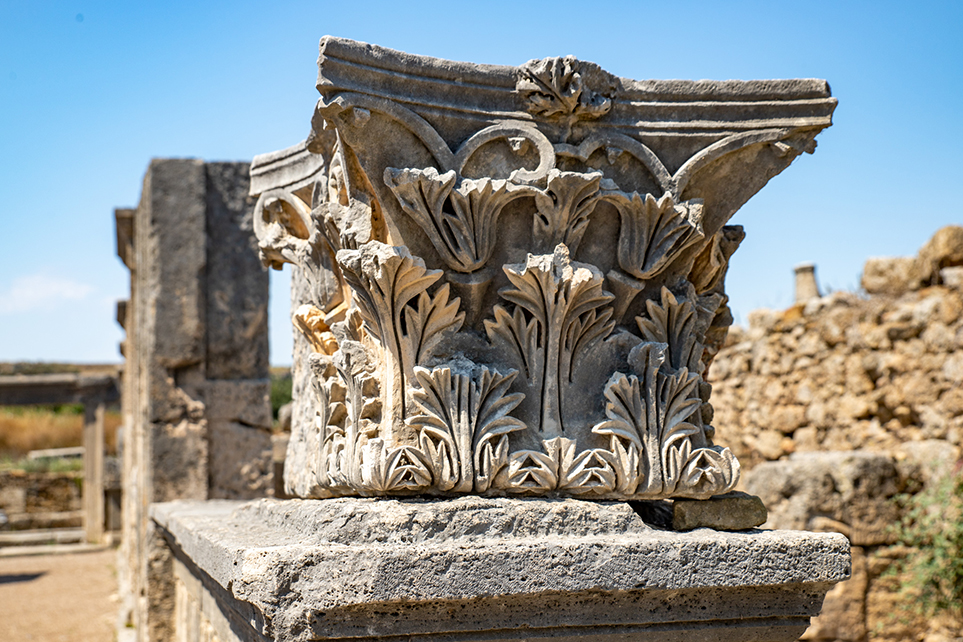
I found Aspendos and Perge truly fascinating. Learning about the people that once walked these city streets was very insightful. I admired the architectural details and design of many of the structures that are still intact today. Without modern technology and tools, I struggle to understand how they were able to build such massive structures with precise accuracy and alignment. Enjoy your travels and take the time to appreciate these amazing historical sites.
Enjoy your travels! Please read my blogs about other exciting places around the world at Traveling Lens Photography.
If you want to read more follow me on Facebook, Instagram, or Pinterest as I share my journey.
Happy Travels!



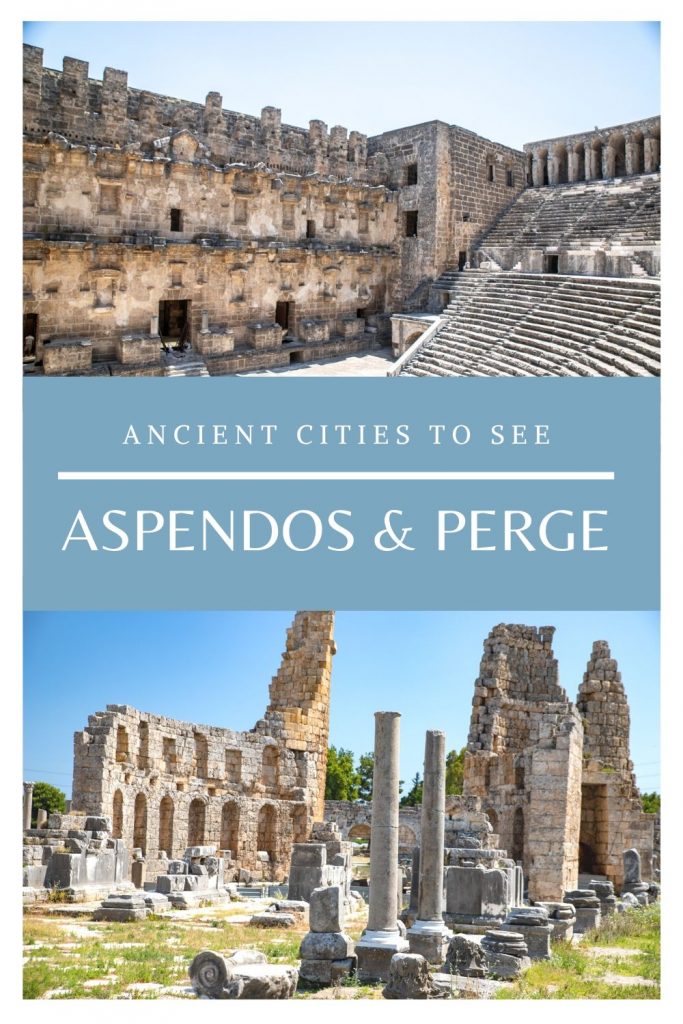
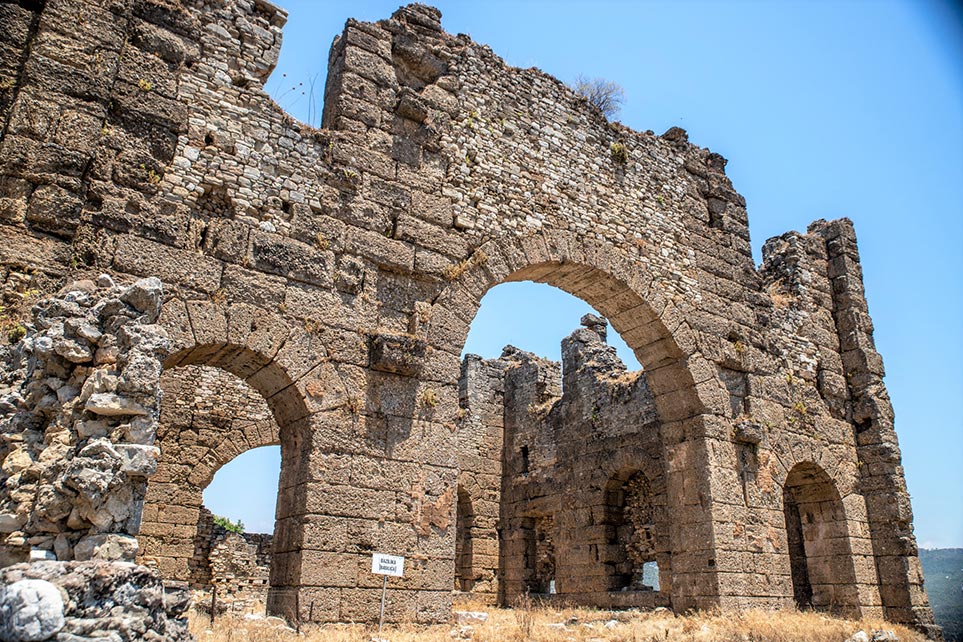
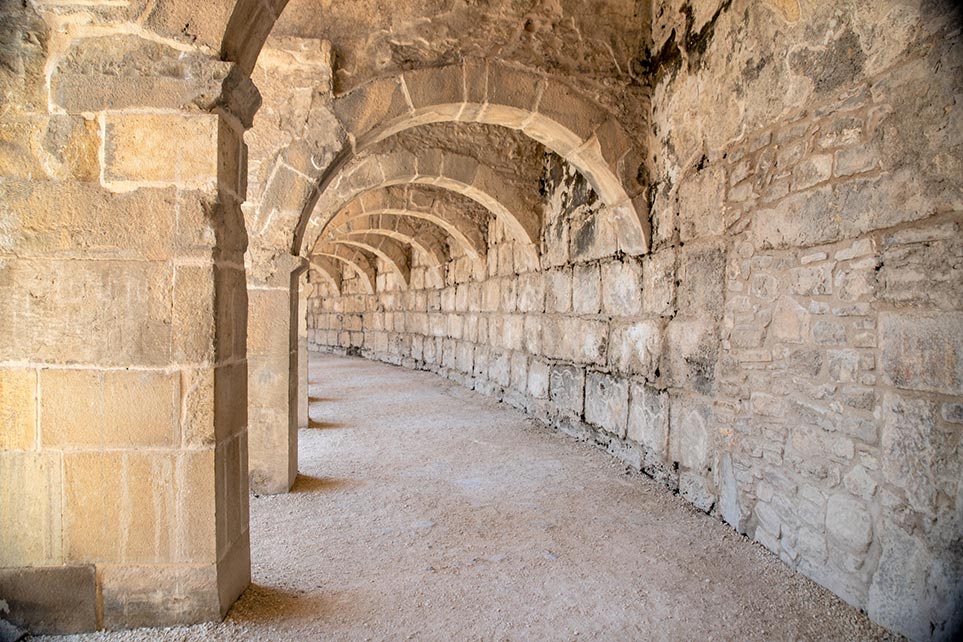

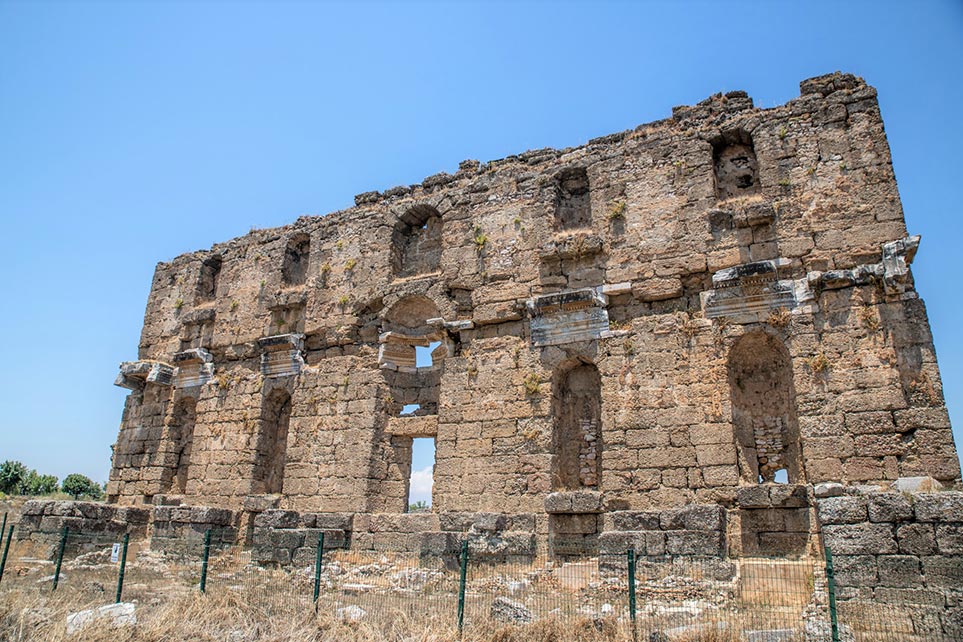
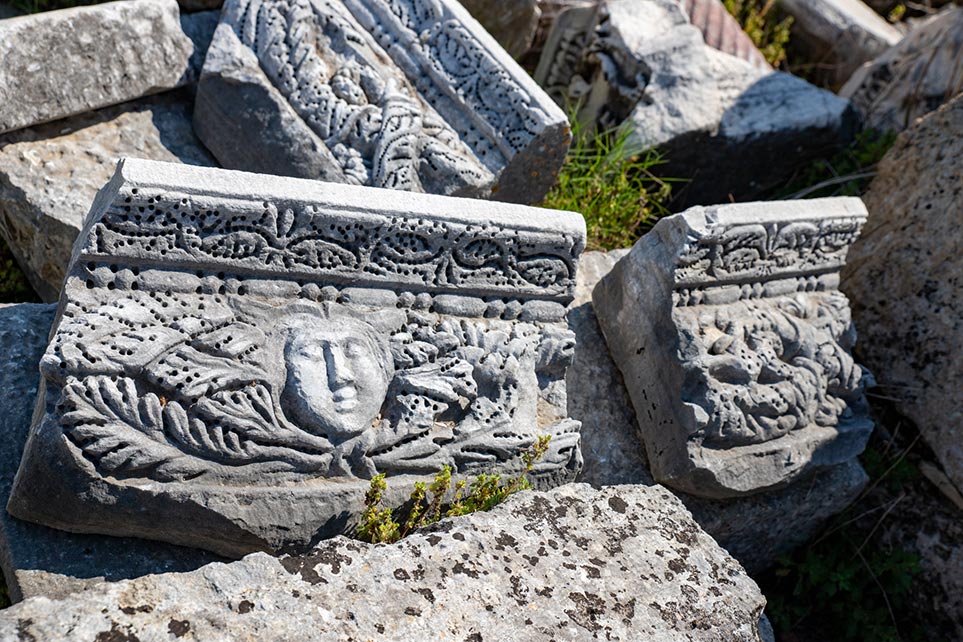
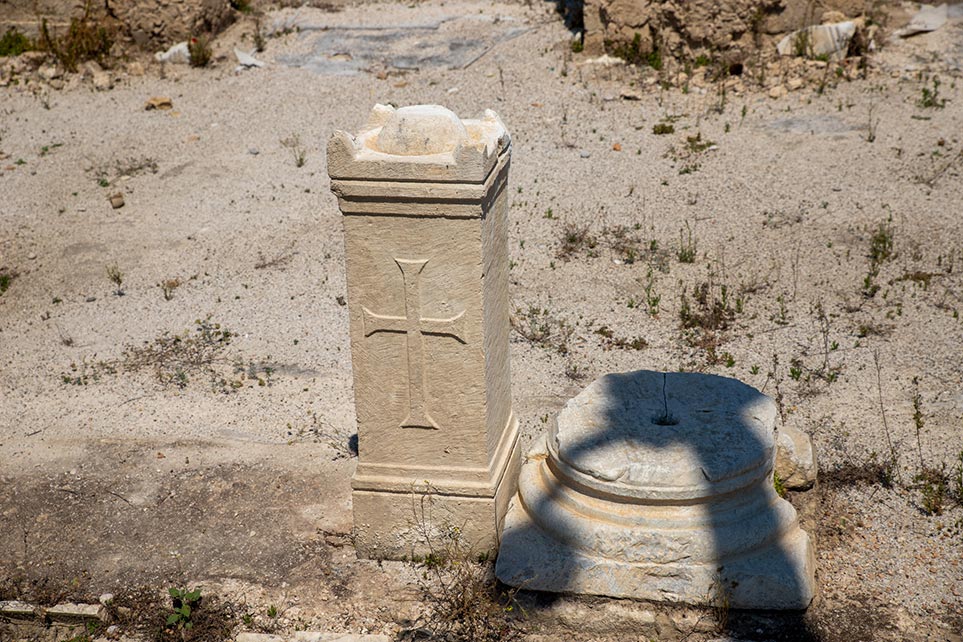
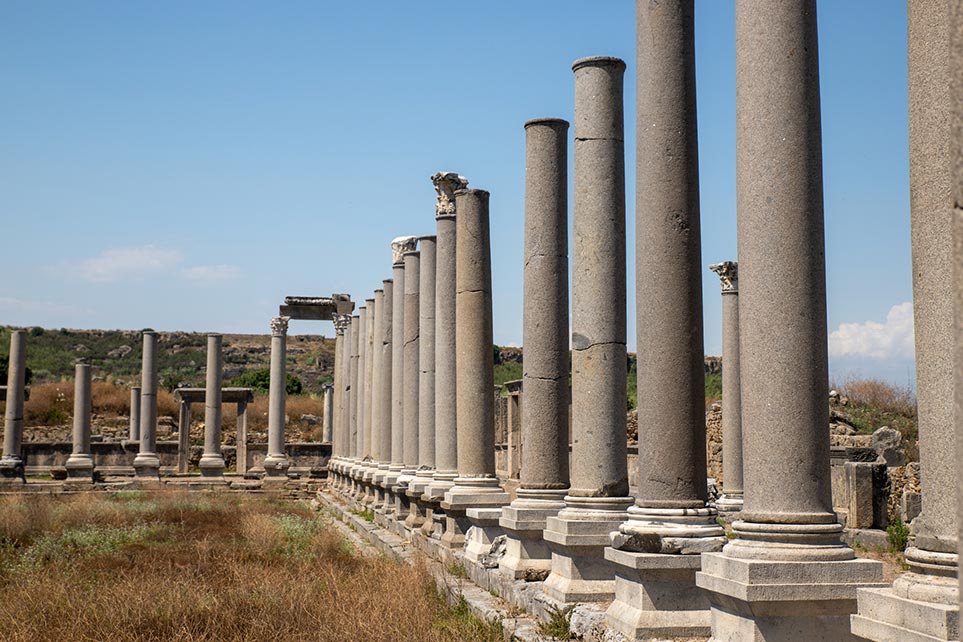
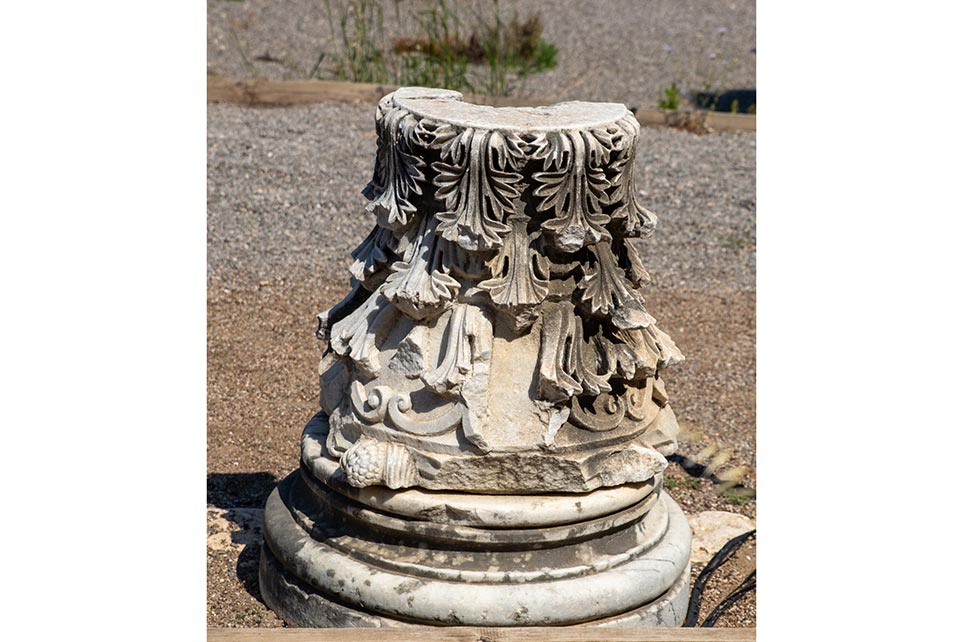
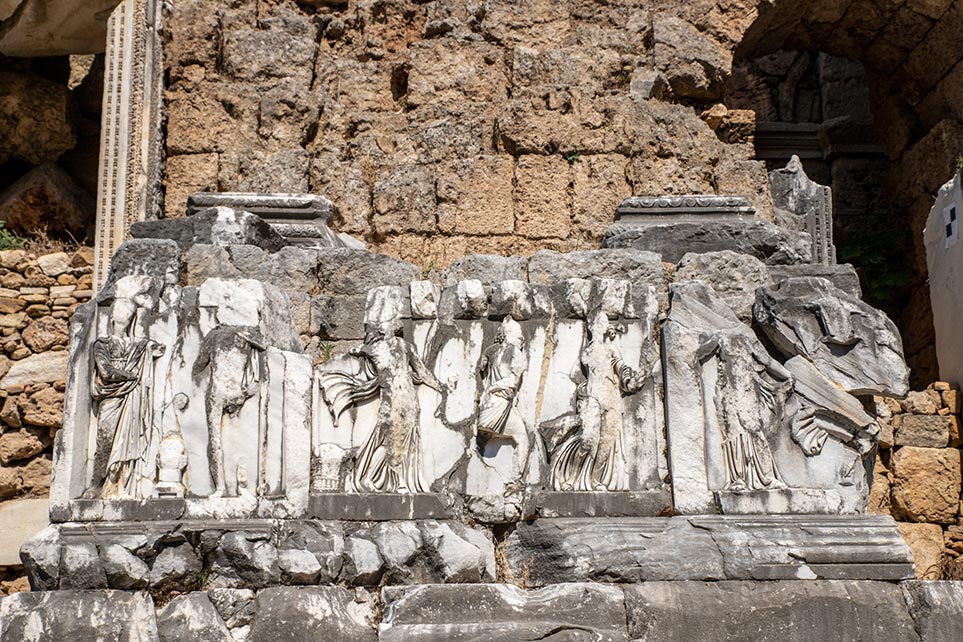
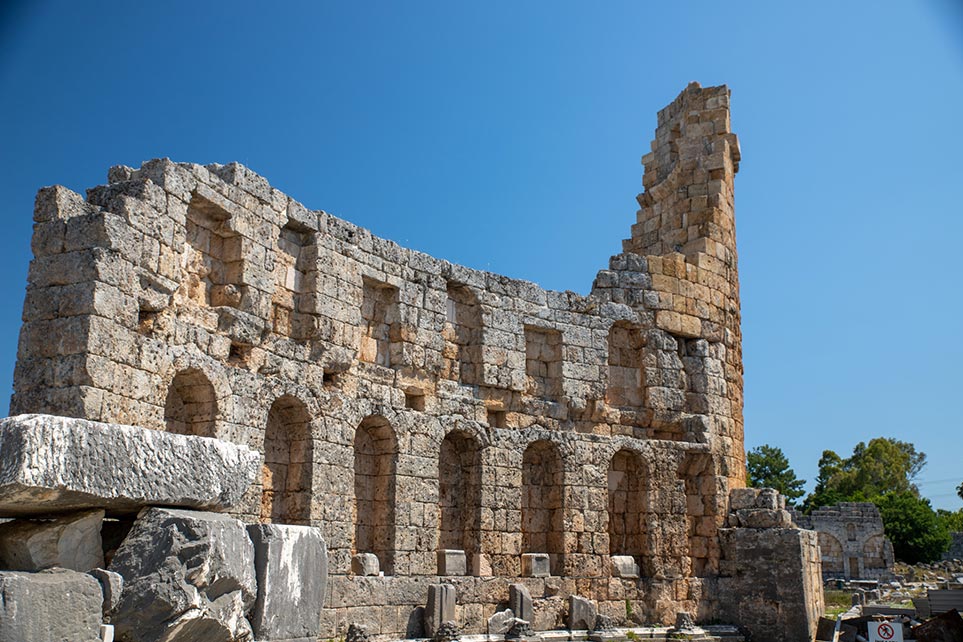
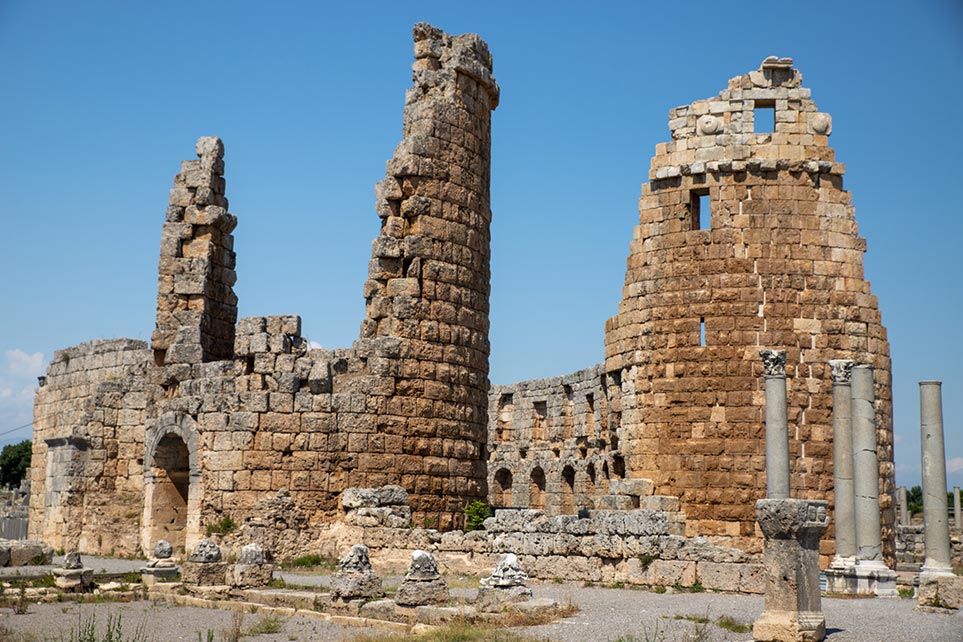
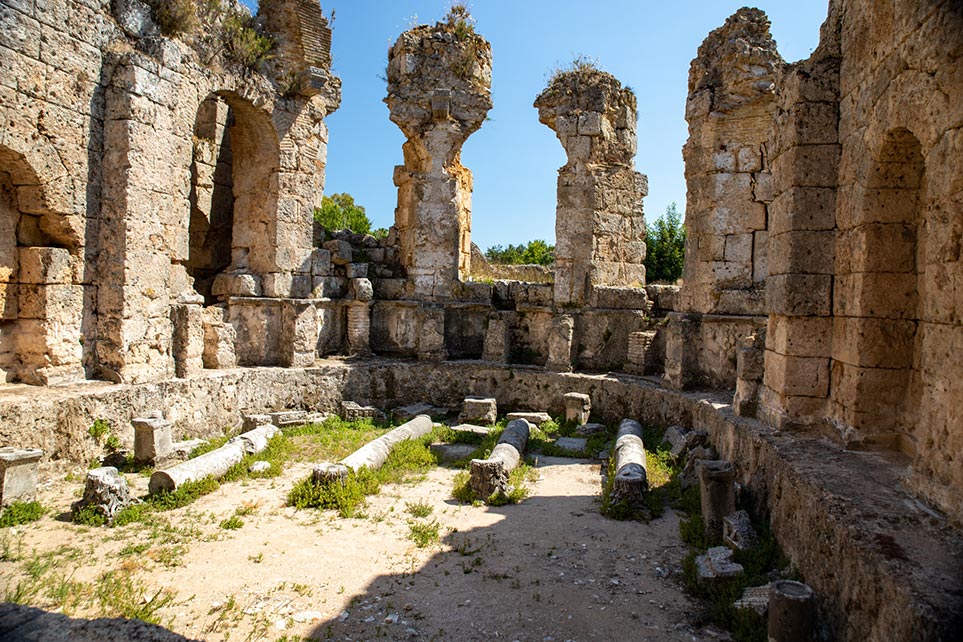
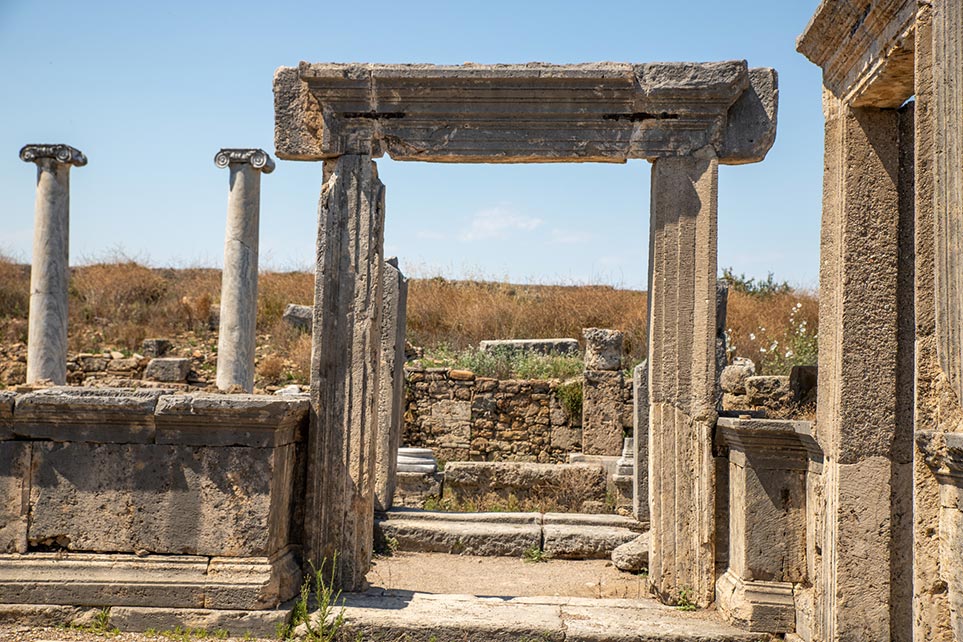
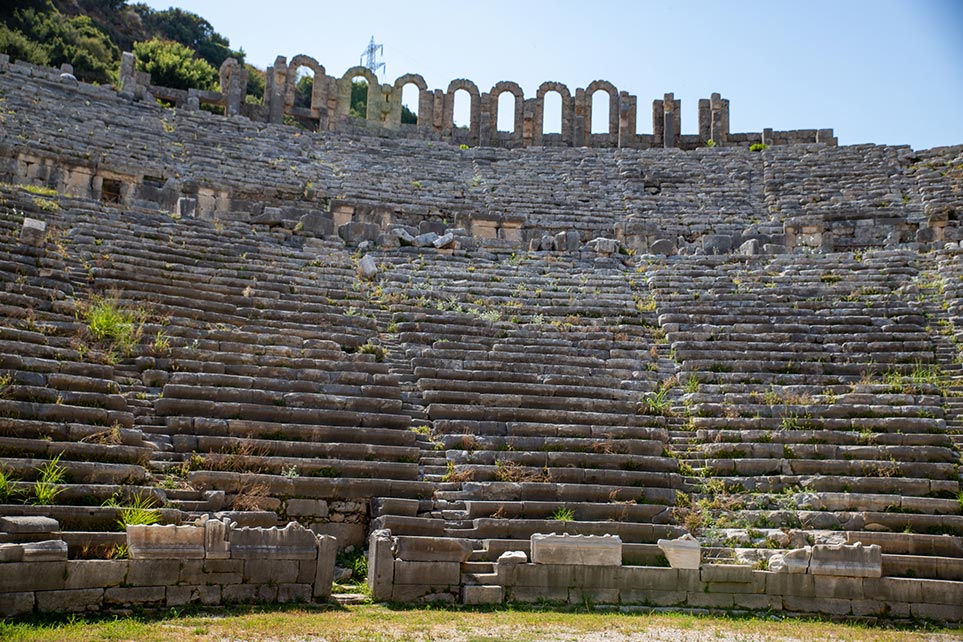
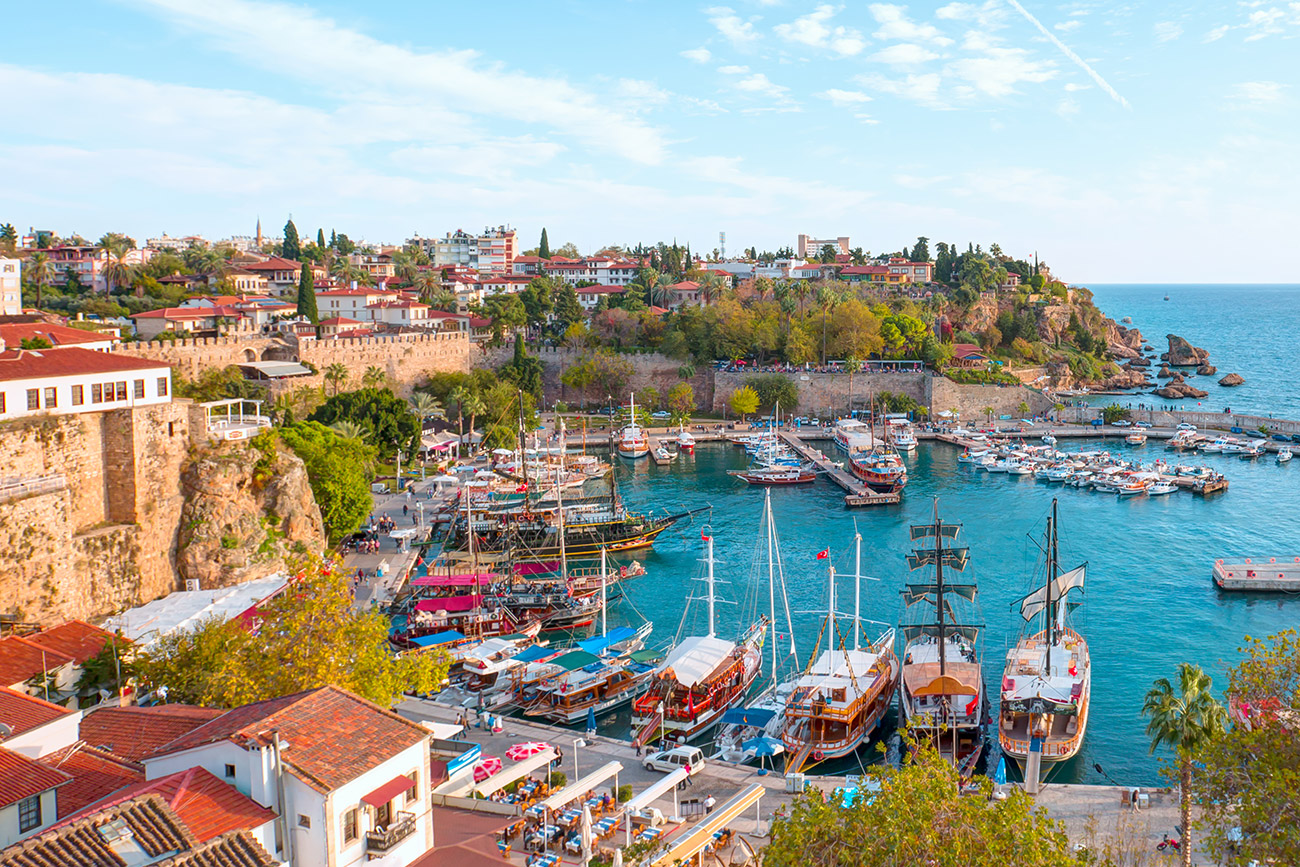

Pingback: Top 10 Places to Visit in Turkey - Travel blog | Traveling Lens Photography
Pingback: 10 Fun Activities in Antalya - Travel blog | Traveling Lens Photography